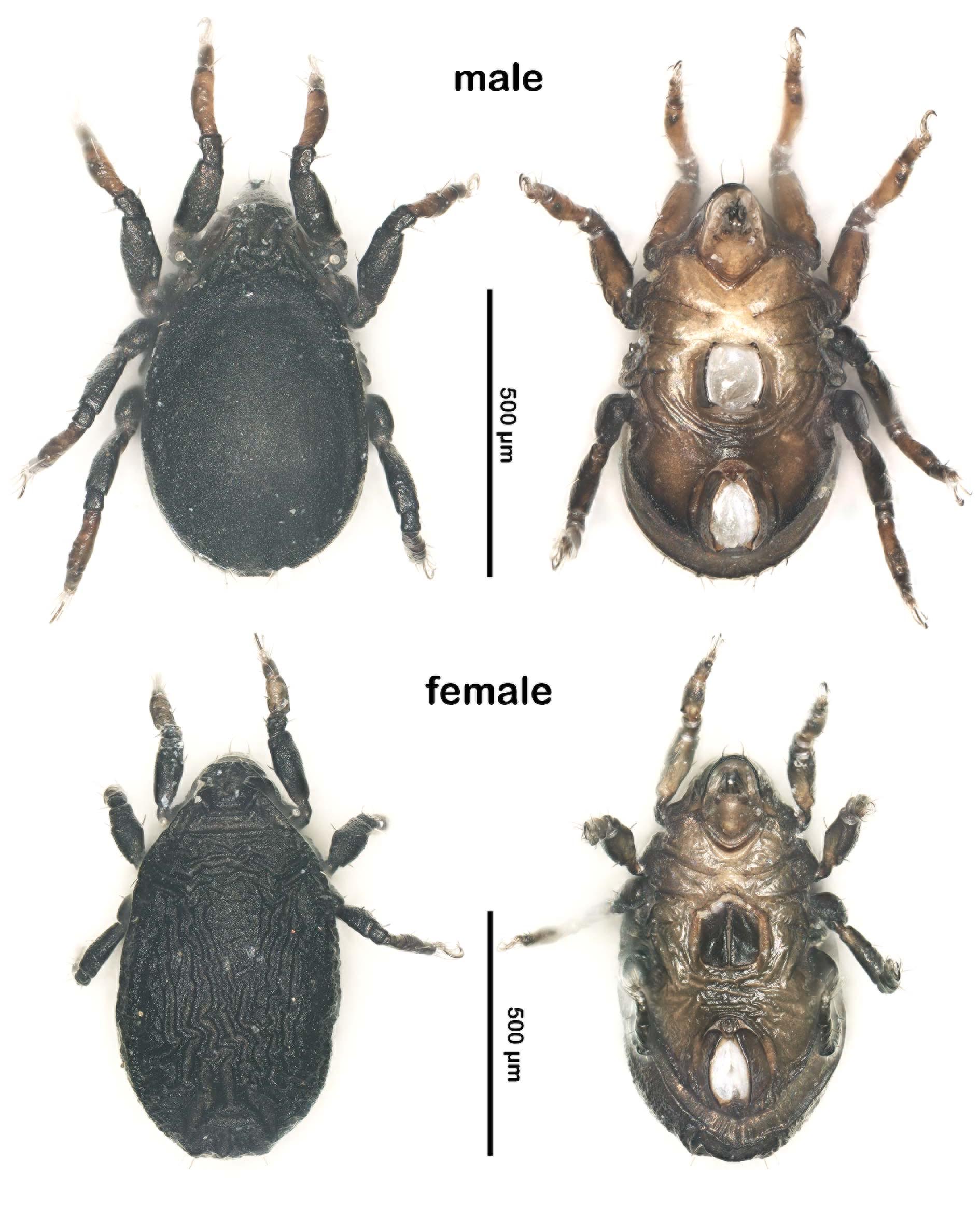Notices
Hosei University Professor Shimano's Twitter Discovery of a New Mite Species, "Scientific Name Retweet," Again Named a "Top 10 New Marine Species to Watch in 2022" by the World Register of Marine Species (WoRMS)
- Apr 12, 2023
A tick discovered by Professor SHIMANO Satoshi of Hosei University's Center for Natural Sciences and Faculty of Intercultural Communication Studies via Twitter has once again been listed as one of the "Top 10 New Marine Species to Watch in 2022" by the World Register of Marine Species (WoRMS). A post on Twitter about A. twitter, a new species described through social networking sites, was followed up with another new species, A. retweet, again thanks to submissions from the public.
Key Points of the Announcement
- When we posted on SNS about the "Japanese twitter mite" Ameronothrus twitter (Japanese name: Choushi Hamabedani) from Choshi City, Chiba Prefecture, which was found by chance on Twitter (Twitter) and selected as one of the "Top 10 New Marine Species to Watch in 2021," we were told that the "now popular Is this what the Hamabedani mite is? Taken in Tottori Prefecture. and this mite was also described as a new species in 2022 as the retweet mite Ameronothrus retweet (Japanese name: Iwado-hamabedani), after the function of Twitter.
- March 19 is "Thank a Taxonomist Day," and to commemorate the day, the World Register of Marine Species (WoRMS), which lists more than 220,000 species, annually selects its "Top 10 New Marine Species to Watch.
- The "Japanese retweet mite" was again selected as one of the "Top 10 New Marine Species to Watch in 2022" by the World Register of Marine Species.
- The World Register of Marine Species also recognized the public's contribution to animal taxonomy, like public participation in the discovery of new stars in astronomy. The use of social media (SNS) allows any general user to cooperate and participate in the discovery of new species and the elucidation of biodiversity, and many applications are expected in the future from the perspective of citizen science.
March 19 is "Appreciation Day for Taxonomists. To commemorate the occasion, each year the World Register of Marine Species (WoRMS) selects the "Top 10 New Marine Species to Watch". Last year, the "Japanese Twitter mite" Ameronothrus twitter ( Japanese name: Choushihamabedani) was selected based on the discovery of a new species through the use of Twitter, a social networking service (SNS), which led to the discovery of a new species based on posts by the general public. Top 10 New Marine Species to Watch in 2022" also selected the retweet mite Ameronothrus retweet (Japanese name: Iwadohamabedani) as a "Japanese retweet mite.
The "Hamabedani mite that is so popular right now, could this be what it is? Taken in Tottori Prefecture. Professor Shimano (Taxonomy) and Dr. Tobias Pfingstill (University of Graz, Austria) and his colleagues also listed this mite as a new species in 2022 as the retweet mite (Iwadohamabedani), after the function of Twitter.
The "Top 10 New Marine Species to Watch in 2022" include the following.
Fluffy Sponge Crab: Discovered in 1836 during a sojourn on the second voyage of the Beagle, which led Charles Darwin to establish his theory of evolution. It is named after Jean-Baptiste Lamarck and has the scientific name Lamarck's Dolomia beagle.
Golden Claw Anemone: This anemone is a symbiotic sea anemone found on the bottom of the Japanese deep sea. The pressure and chemical properties of the deep sea make it difficult for animals such as snails to form large shells, and hermit crabs are unable to do so. So, similar to the relationship between Calcifer and the wizard Howl in "Howl's Moving Castle," the golden-cloaked anemone is bound by a relationship to live on the hermit crab's moving shell.
King Ghidorah's branching annelids: Because of their distinctive appearance, they were named "King Ghidorasiris" after the three-headed monster in the "Godzilla" movie series. The research team describes it as "an organism that defies common sense in biology.
It must be an accomplishment that this small and inconspicuous mite, measuring less than 1 mm in length, has been featured in the "Top 10 New Marine Life Species to Watch" for two consecutive years. The intertidal mite was featured along with other fascinating deep-sea creatures and other species with outstanding features (the mites have no impact on the human body and feed on organic matter such as fallen leaves and lichens). It appears that the World Register of Marine Species has recognized citizens' contributions to animal taxonomy in the same way that it has recognized "citizen participation in the discovery of new stars in astronomy, etc." Through the use of social media (SNS) and other means, anyone can cooperate and participate in the discovery of new species and the elucidation of biodiversity, and from the perspective of citizen science, many applications can be expected in the future. From the viewpoint of biodiversity, it shows that there is no living thing that is not necessary in an ecosystem. This is the second year in a row that the "Taxonomist's Day" has been a wonderful event that continues to elucidate biodiversity.
Announcement on an Internet site
World Register of Marine Species (WoRMS)
Published on Sunday, March 19, 2023
Title: Ten remarkable new marine species from 2022
Top 10 remarkable new marine species from 2022
https://lifewatch.be/en/2023.03.19-WoRMS-LifeWatch-press-release
https://www.marinespecies.org/news.php?p=show&id=9165

A new species of spider mite discovered through the use of social media (SNS). Male (upper row) female (lower row).
For inquiries regarding this matter, please contact
Professor Tomoyuki Shimano, Hosei University, Center for Natural Sciences and Faculty of Intercultural Communication Studies
E-Mail: sim@hosei.ac.jp

